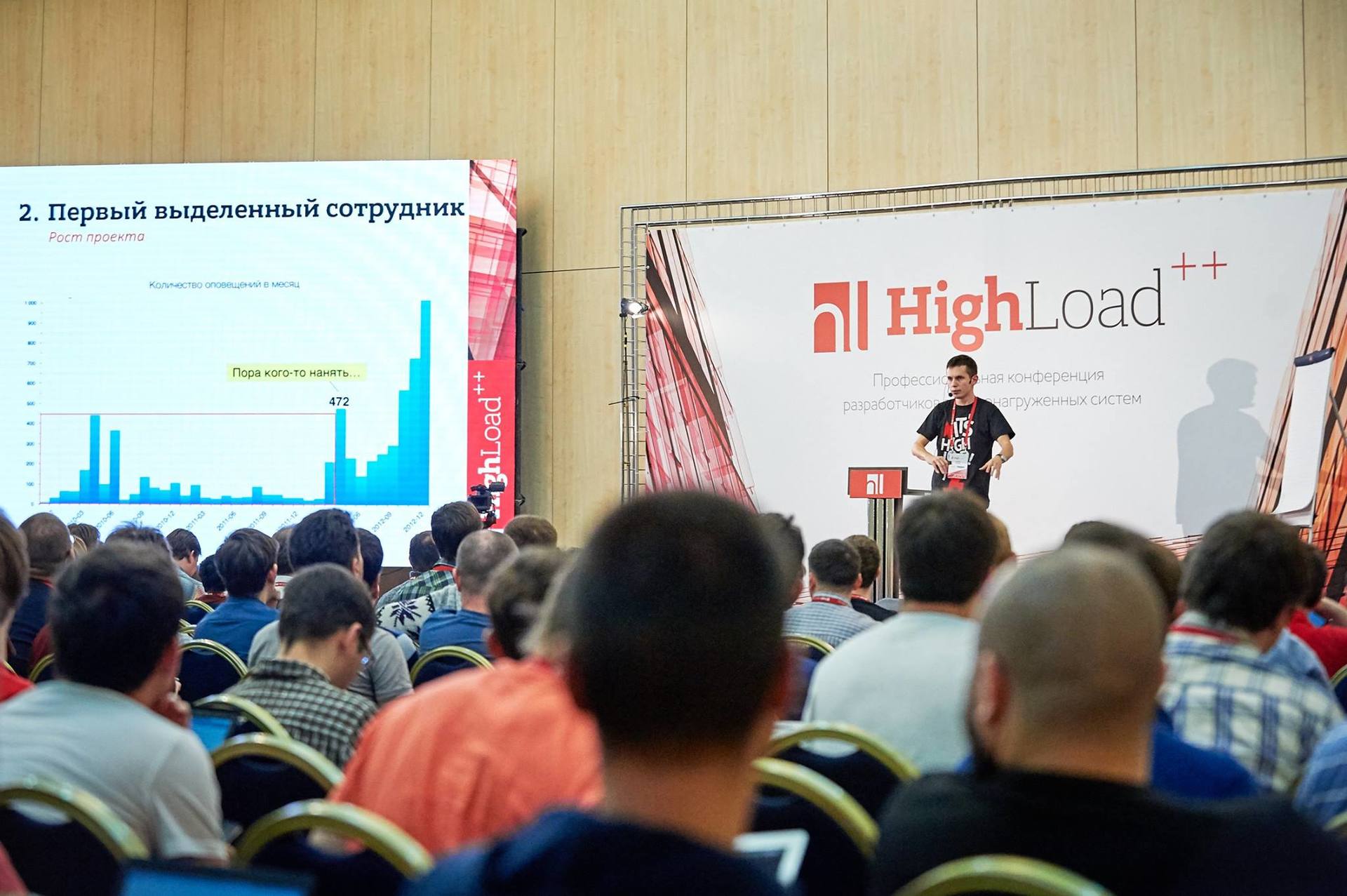Three technical advice on working with slides

Today, the advice is not philosophical, but practical, and at the same time quite simple, with the exception of the second. Those who perform regularly, they may have thought of it themselves, but hopefully they will help the newcomer to save a few nerve cells. In the photo to the post - Evgeny Potapov, CEO of Summa IT , talks at Highload ++ 2015 about the features of organizing round-the-clock technical support. Speech content - fire, by the way. I myself had the opportunity to participate in the organization of the service that worked around the clock (it was the assessors service of Yandex), but they did not need to have a specific duty schedule: it was necessary to perform a certain amount of work, but no specific task was critical. Here, tasks should always be responsible, and none of them should be missed. Accordingly, it is necessary to have at least a clear schedule of duty, which is executed and from which people do not want to quit after a couple of weeks. Organizing a service that works without failures and overlays for reasonable money is a task that has its own specifics, and Eugene talks about how he managed to solve it and what rake he was on the way.
But I got distracted. The photo is important because it captures the mistake that is made quite often at conferences.
Tip one: do not use the bottom 20% of the slide
In this case, I am guilty because I participated in the presentation design and did not warn the speakers about a possible problem. But now I have an educational picture. If you are in a flat room (where the back rows of chairs are located at the same height as the front ones), and the screen is not very high, then for the inhabitants of the third and fourth rows the lower part of the screen will be closed with heads ahead of them and for the back rows This situation is not improving.
')
There are halls arranged differently. But if you do not know in advance how the room is arranged, or if you are making slides, so that you can go around a dozen conferences with them without modifications, then it is better to assume that the bottom of the slide is not visible: there will be seven or eight of a dozen such cases. Even a good case, obviously, does not guarantee the viewers a complete overview:

(frame taken from this video here)
The bottom of the slide is a suitable place to make a beautiful gradient area of the background there, place a logo or something else that will prevent you from locating the main content in this area.
Tip Two: Don't get mad at the clicker when it doesn't work.
A clicker (also known as a presentation console) is such a thing that every frequent speaker of a person has ever missed. Access to the presentation computer is not always there, it happens that the good old Enik is located ten to fifteen meters from the scene and you cannot physically press it, so you cannot do without the remote control.
If we are at the limit of its range or batteries are sitting in it, the clicker does not work every time. We press the button, nothing happens. We press the button again, and nothing happens again. And here we have the thought “oh you, an infection” and a natural impulse arises to press the button harder and hold it longer . So, this rush must be contained! Then everything will work right away, and your slides will be scrolled to the end in a second. All the tricky plot twists that you thought up
You will cause much less damage to yourself if you admit that you have a problem with the clicker, try to take a few steps in the direction of the presentation computer (you need to know where it stands) and just as carefully as before, press the button again . Good old "pants are turning ..." has not been canceled.
Tip Three: Version Slides
It happens that you do not copy the presentation files onto a demo computer, but give them to special people on a flash drive or by mail. And it is not uncommon that after the first version you still continue to make some changes. No matter how confidently these people confirm the receipt of the file, there is always a chance that they will lose it. The fact that you have included not the latest version of the slides, it is better to find out as soon as possible. “But now I’ll show you a solution to this problem ... Oh, no, I’ll not show you, I’ve included the wrong slides ...” The easy way to find out if there is a discrepancy is to mark the title slide with a version. It usually includes a minute or two before the start of the speech, and you still have the opportunity to do something. Do I have to say that you need to have the latest version of slides on a flash drive with you?
The version can be marked with a number, as Anatoly anatolix Orlov and Denis Nagornov did:
or some tricky design element that you can understand. It is important that you have already been able to correctly determine from the first slide whether this is the latest version or not.
Summary
I hope knowledge of these pitfalls will help you focus on the content of your performance and reduce the number of annoying technical interference. Good luck!
Source: https://habr.com/ru/post/298690/
All Articles